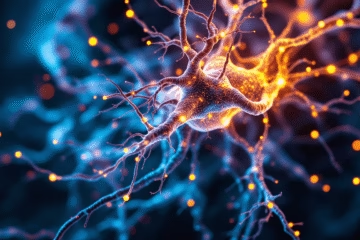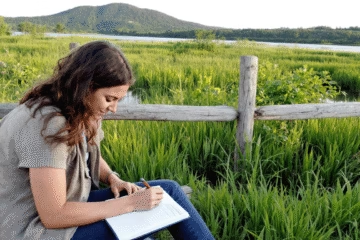In an increasingly fast-paced world filled with distractions, mindfulness practice becomes a valuable tool, especially for children. Mindfulness exercises for kids not only help little ones develop concentration and self-control skills but also promote emotional well-being and resilience. In this article, we will explore what mindfulness is, its importance for children, and present a variety of practical exercises that can be easily incorporated into daily life.
Mindfulness Exercises for Kids
Childhood is a phase full of discoveries and learning, but it can also be a time of stress and anxiety. Children face academic, social, and family pressures that can be overwhelming. This is where mindfulness becomes a powerful tool. By teaching children to be more present and aware, we can help them better manage their emotions and develop skills that will accompany them throughout their lives.
In this article, we will discuss the importance of mindfulness for children, present practical exercises, and share stories from parents and educators who have successfully implemented these practices. Let’s explore how mindfulness exercises for kids can transform the lives of young ones!
Step into the world of learning and personal growth with the Centre of Excellence!
What is Mindfulness?
Mindfulness is the practice of being fully present in the moment, aware of your thoughts, feelings, and bodily sensations without judgment. This practice has its roots in Buddhist meditation but has been adapted for the Western context, being widely used in therapies and wellness programs.
Benefits of Mindfulness for Children
The benefits of mindfulness for children are vast and include:
- Reduction of Stress and Anxiety: Regular mindfulness practice can help children manage stress and anxiety, providing a safe space to explore their emotions.
- Improved Concentration: Mindfulness exercises help increase focus and attention, which are essential for learning.
- Development of Empathy: The practice of mindfulness encourages understanding and acceptance of others’ feelings, promoting healthy relationships.
- Increased Resilience: Children who practice mindfulness tend to be more resilient, coping better with challenges and adversities.
- Promotion of Emotional Well-Being: Mindfulness can help children become more aware of their emotions, leading to better emotional regulation.
Mindfulness Exercises for Kids: Practical Practices
Here are some mindfulness exercises that can be easily implemented at home or in school. These exercises are designed to be fun and engaging, helping children connect with the present moment.
1. Balloon Breathing
Objective: Teach children to control their breathing and relax.
How to do it:
- Ask the child to imagine they are holding a balloon.
- As they inhale, they should imagine they are filling the balloon with air.
- As they exhale, they should visualize slowly releasing the air from the balloon.
- Repeat for 5 to 10 times, encouraging the child to pay attention to the sensation of air entering and leaving.
Personal Testimony: Ana, a mother of a 7-year-old boy, shares: “Since we started doing balloon breathing, my son calms down much faster when he’s anxious. He loves imagining he’s filling a colorful balloon!”
2. Nature Observation
Objective: Increase sensory awareness and appreciation of the environment.
How to do it:
- Take the children to an outdoor environment, such as a park or garden.
- Ask them to choose a natural object (a leaf, a stone, a flower) and observe it closely.
- Encourage them to notice details like colors, textures, and shapes.
- Ask what they felt while observing the object and how it made them feel.
3. The Silence Game
Objective: Enhance auditory awareness and promote calmness.
How to do it:
- Have the children sit in a circle and close their eyes.
- Explain that they should remain silent and listen to the sounds around them.
- After a few minutes, ask them to share what they heard. This can include nature sounds, distant voices, or even the sound of their breathing.
4. The Relaxed Body Technique
Objective: Help children relax and connect with their bodies.
How to do it:
- Ask the child to lie down comfortably on a mat or bed.
- Instruct them to close their eyes and focus on each part of their body, starting from their feet and moving up to their head.
- Ask them to relax each part of their body, visualizing it becoming heavy and loose.
- This can be done in a quiet environment, with soft music in the background.
5. Counting Breaths
Objective: Increase concentration and awareness of breathing.
How to do it:
- Ask the child to sit comfortably and close their eyes.
- Instruct them to count their breaths: as they inhale, count “one,” as they exhale, count “two,” and so on, up to ten.
- If their mind wanders, encourage them to start counting again from one.
Incorporating Mindfulness into Daily Routines
Integrating mindfulness into children’s daily lives can be simple and fun. Here are some practical tips:
- Create a Mindfulness Space: Reserve a corner of the house for mindfulness practice, with cushions, books, and materials that encourage calmness.
- Establish a Regular Schedule: Choose a specific time of day to practice mindfulness, such as before bed or after school.
- Use Meditation Apps: There are several apps aimed at children that offer guided meditations and mindfulness exercises.
- Encourage Group Practice: Organize mindfulness sessions with family or at school, where children can practice together.
- Be a Role Model: Demonstrate mindfulness practice in your own life. Children learn by observing adults, so show how you also dedicate time to moments of mindfulness.
Educator Testimonials
Teachers who have implemented mindfulness in their classrooms have observed significant changes in student behavior and performance.
Educator Testimony: “After introducing mindfulness exercises in my classroom, I noticed that students were more focused and less prone to distractions. They also became more empathetic towards each other. It’s amazing to see how mindfulness can transform the school environment!” – Carla, 4th-grade teacher.
Step into the world of learning and personal growth with the Centre of Excellence!
Conclusion
Mindfulness exercises for kids are an effective way to help children develop self-control, concentration, and empathy skills. By incorporating mindfulness practices into daily routines, we can provide children with valuable tools to manage stress and emotions, promoting healthy and balanced growth.
If you found this article helpful, don’t hesitate to share it with friends and family who may benefit from mindfulness practices for kids. Together, we can help children become more aware and resilient.
Frequently Asked Questions:
How can mindfulness practices be made engaging and fun for children?
Mindfulness can be made fun by incorporating creative activities like imagining balloon filling, exploring natural objects, playing listening games, using soft music during relaxation, and turning exercises into playful, interactive sessions that connect with children’s interests.
What are the benefits of mindfulness for children’s emotional and social development?
Mindfulness helps children develop empathy, better emotional regulation, increased resilience, reduced anxiety, and improved social skills, leading to healthier relationships and better emotional health.
How can parents and teachers incorporate mindfulness into daily routines?
Parents and teachers can create a designated mindfulness space, establish a regular practice schedule, use guided meditation apps, encourage group practice sessions, and demonstrate mindfulness behaviors themselves to foster consistency and engagement.
What are some simple mindfulness exercises suitable for kids?
Some practical mindfulness exercises for kids include balloon breathing to control breathing and relax, nature observation to enhance sensory awareness, the silence game to improve auditory awareness, the relaxed body technique to promote relaxation, and counting breaths to increase concentration.
What is mindfulness, and why is it important for children?
Mindfulness is the practice of being fully present in the moment, aware of thoughts, feelings, and bodily sensations without judgment. It helps children manage stress, improve concentration, develop empathy, increase resilience, and promote emotional well-being.
Body, Mind, And Soul For A Fulfilled Life!




